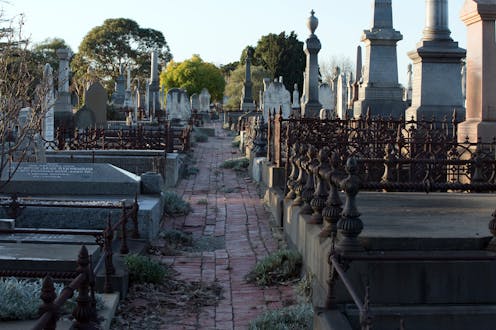
Last month, the Australian Bureau of Statistics (ABS) released a report of mortality statistics. It showed that from January to July 2022, there were 17% more deaths (16,375) than the average expected for these months.
This historical average is based on an average of the deaths for 2017, 2018, 2019 and 2021. They did not include 2020 in the baseline for 2022 data because it included periods where numbers of deaths were significantly lower than expected. The difference between the expected number of deaths based on historical data, and the actual number, is called “excess deaths”.
However, as the ABS points out in its report, using previous years as the predictor for the expected number of deaths does not take into account changes in population age structure over time, or potential improvements in mortality rates.
As we will see, the excess deaths this year were likely lower than the ABS estimate – but still overwhelmingly related to COVID and its effects on health.
A different approach
Last week, the Australian Actuaries Institute released its report looking at excess deaths. Actuaries are statisticians who specialise in assessing risk, and most often work for insurance companies, superannuation funds, banks or government departments.
Unlike the ABS, the actuaries’ report adjusts the expected deaths for differences in age distributions over time using a method called “direct age-standardisation”.
The report also uses a counterfactual approach which basically asks, what would the number of deaths have been in the absence of the pandemic? Their comparison between recorded and expected deaths is likely to be more accurate than the ABS comparison.
What the actuaries saw
Both the Actuaries Institute report and the ABS separate COVID deaths into two categories:
deaths from COVID, where COVID is listed as the primary or underlying cause of death
deaths with COVID, where the underlying cause of death has been determined as something other than COVID, but the virus was a contributing factor.
The Actuaries Institute report shows 13% excess mortality for the first eight months of 2022 (approximately 15,400 deaths), substantially lower than the ABS estimate for the first seven months.
Just over half of the excess mortality – 8,200 deaths, are deaths from COVID. Another 2,100 deaths are deaths with COVID. The remaining excess of 5,100 deaths makes no mention of COVID on the death certificate.

Read more: Even mild COVID raises the chance of heart attack and stroke. What to know about the risks ahead
So what is the likely cause of those non-COVID excess deaths?
The actuaries’ report gives the following possible explanations for excess deaths not listed as from or with COVID:
Long COVID and interactions with other serious health conditions
A previous COVID infection can cause later illness or death. We know COVID is associated with higher risk of death from heart disease, cancer and other causes.
But a doctor tasked with completing a death certificate may not identify a link between the death and a COVID infection months earlier. Therefore, it seems likely some deaths were due to late COVID effects.
Delayed deaths from other causes
Deaths from respiratory disease in 2020 and 2021 were lower than expected. This is presumably due to public health measures like mask wearing. While those measures were in place, people caught fewer respiratory diseases. Some people may have died earlier had their systems been stressed by respiratory disease during this time. So, some of the reported non-COVID excess deaths may be due to the catch-up effect of those people succumbing to underlying illnesses.
Delays in emergency care
Around Australia, our health systems are under pressure, with staff absences due to COVID, ambulance ramping, and bed blocks in our acute hospitals.
Unfortunately, there have been cases of people dying while waiting for an ambulance. It could be that people with conditions such as heart disease, cancer or diabetes may not be getting lifesaving emergency care due to these factors.
Delays in routine care
Over the pandemic period we have seen delays in people seeking routine health care or attending screening tests for breast and cervical cancer.
There have also been delays in elective surgery. And people may have been avoiding health-care settings due to fear of catching COVID. These delays in routine care may have led to deaths that would have been prevented in previous years.

Pandemic lifestyle changes
There is evidence in Australia and the United Kingdom a higher proportion of people made less healthy lifestyle choices during lockdowns, such as drinking more alcohol and exercising less. Higher risks for childhood obesity were also noted. We could be starting to see the impact of these changes.
Undiagnosed COVID
It is almost certain some of the excess deaths are from unidentified COVID. Unfortunately in Australia, we have no firm data on the percentage of undiagnosed COVID cases, and even less on how that percentage might have changed over time.
So, the good news is the ABS excess death estimate of 17% more deaths in the first eight months of this year is likely an over-estimate, with the true rate closer to 13%. Of this 13%, some 7% are deaths from COVID, 2% are deaths with COVID, and much of the remaining 4% is likely to still be COVID-related in some way.
Last week, there were 219 COVID-related deaths reported. If the actuaries’ analysis is accurate, then the true number of COVID-related deaths last week was closer to 250 – a sobering thought as we approach the festive season.
Adrian Esterman receives funding from the MRFF, the NHMRC and the ARC.
This article was originally published on The Conversation. Read the original article.







